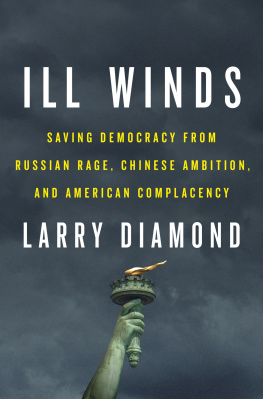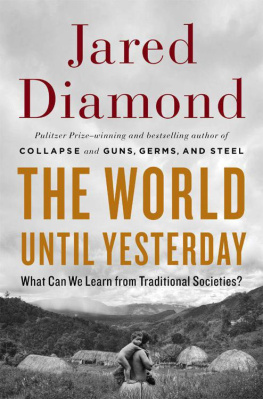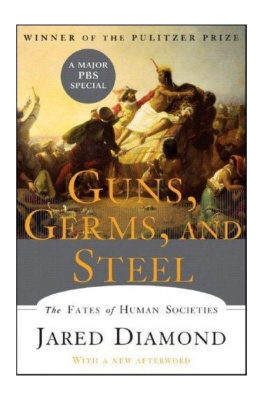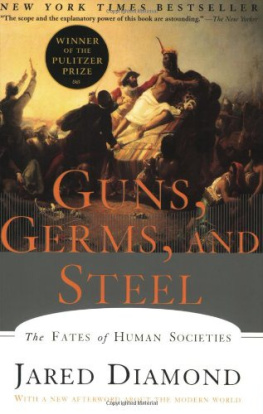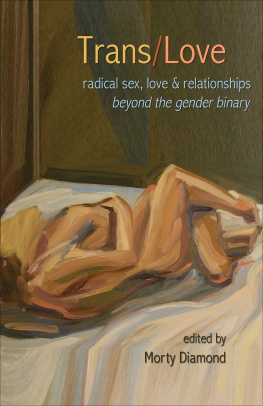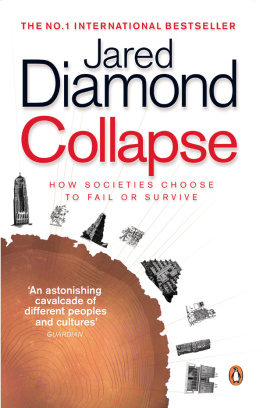WHY IS WORLD HISTORY LIKE AN ONION?
THIS BOOK ATTEMPTS TO PROVIDE A SHORT HISTORY OF everybody for the last 13,000 years. The question motivating the book is: Why did history unfold differently on different continents? In case this question immediately makes you shudder at the thought that you are about to read a racist treatise, you aren't: as you will see, the answers to the question don't involve human racial differences at all. The book's emphasis is on the search for ultimate explanations, and on pushing back the chain of historical causation as far as possible. Most books that set out to recount world history concentrate on histories of literate Eurasian and North African societies. Native societies of other parts of the worldsub-Saharan Africa, the Americas, Island South- east Asia, Australia, New Guinea, the Pacific Islandsreceive only brief treatment, mainly as concerns what happened to them very late in their history, after they were discovered and subjugated by western Europeans. Even within Eurasia, much more space gets devoted to the history of west- ern Eurasia than of China, India, Japan, tropical Southeast Asia, and other eastern Eurasian societies. History before the emergence of writing around 3,000 B.C. also receives brief treatment, although it constitutes 99.9% of the five-million-year history of the human species.
Such narrowly focused accounts of world history suffer from three dis- advantages. First, increasing numbers of people today are, quite under- standably, interested in other societies besides those of western Eurasia. After all, those other societies encompass most of the world's popula- tion and the vast majority of the world's ethnic, cultural, and linguistic 1O PREFACE groups. Some of them already are, and others are becoming, among the world's most powerful economies and political forces.
Second, even for people specifically interested in the shaping of the modern world, a history limited to developments since the emergence of writing cannot provide deep understanding. It is not the case that societies on the different continents were comparable to each other until 3,000 B.C., whereupon western Eurasian societies suddenly developed writing and began for the first time to pull ahead in other respects as well. Instead, already by 3,000 B.C., there were Eurasian and North African societies not only with incipient writing but also with centralized state governments, cities, widespread use of metal tools and weapons, use of domesticated animals for transport and traction and mechanical power, and reliance on agriculture and domestic animals for food. Throughout most or all parts of other continents, none of those things existed at that time; some but not all of them emerged later in parts of the Native Americas and sub-Saharan Africa, but only over the course of the next five millennia; and none of them emerged in Aboriginal Australia. That should already warn us that the roots of western Eurasian dominance in the modern world lie in the preliterate past before 3,000 B.C. (By western Eurasian dominance, I mean the dominance of western Eurasian societies themselves and of the socie- ties that they spawned on other continents.)
Third, a history focused on western Eurasian societies completely bypasses the obvious big question. Why were those societies the ones that became disproportionately powerful and innovative? The usual answers to that question invoke proximate forces, such as the rise of capitalism, mercantilism, scientific inquiry, technology, and nasty germs that killed peoples of other continents when they came into contact with western Eur- asians. But why did all those ingredients of conquest arise in western Eurasia, and arise elsewhere only to a lesser degree or not at all?
All those ingredients are just proximate factors, not ultimate explana- tions. Why didn't capitalism flourish in Native Mexico, mercantilism in sub-Saharan Africa, scientific inquiry in China, advanced technology in Native North America, and nasty germs in Aboriginal Australia? If one responds by invoking idiosyncratic cultural factorse.g., scientific inquiry supposedly stifled in China by Confucianism but stimulated in western Eurasia by Greek or Judaeo-Christian traditionsthen one is continuing to ignore the need for ultimate explanations: why didn't traditions like Confucianism and the Judaeo-Christian ethic instead develop in western Eurasia and China, respectively? In addition, one is ignoring the fact that Confucian China was technologically more advanced than western Eurasia until about A.D. 1400.
It is impossible to understand even just western Eurasian societies them- selves, if one focuses on them. The interesting questions concern the dis- tinctions between them and other societies. Answering those questions requires us to understand all those other societies as well, so that western Eurasian societies can be fitted into the broader context.
Some readers may feel that I am going to the opposite extreme from conventional histories, by devoting too little space to western Eurasia at the expense of other parts of the world. I would answer that some other parts of the world are very instructive, because they encompass so many societies and such diverse societies within a small geographical area. Other readers may find themselves agreeing with one reviewer of this book. With mildly critical tongue in cheek, the reviewer wrote that I seem to view world history as an onion, of which the modern world constitutes only the surface, and whose layers are to be peeled back in the search for historical understanding. Yes, world history is indeed such an onion! But that peeling back of the onion's layers is fascinating, challengingand of overwhelm- ing importance to us today, as we seek to grasp our past's lessons for our future.
J.D.
Guns, Germs and Steel
PROLOGUE
YALI'S QUESTION W E ALL KNOW THAT HISTORY HAS PROCEEDED VERY DIF- ferently for peoples from different parts of the globe. In the 13,000 years since the end of the last Ice Age, some parts of the world developed literate industrial societies with metal tools, other parts devel- oped only nonliterate farming societies, and still others retained societies of hunter-gatherers with stone tools. Those historical inequalities have cast long shadows on the modern world, because the literate societies with metal tools have conquered or exterminated the other societies. While those differences constitute the most basic fact of world history, the rea- sons for them remain uncertain and controversial. This puzzling question of their origins was posed to me 25 years ago in a simple, personal form.
In July 1972 I was walking along a beach on the tropical island of New Guinea, where as a biologist I study bird evolution. I had already heard about a remarkable local politician named Yali, who was touring the dis- trict then. By chance, Yali and I were walking in the same direction on that day, and he overtook me. We walked together for an hour, talking during the whole time.
Yali radiated charisma and energy. His eyes flashed in a mesmerizing way. He talked confidently about himself, but he also asked lots of probing questions and listened intently. Our conversation began with a subject then on every New Guinean's mindthe rapid pace of political developments. Papua New Guinea, as Yali's nation is now called, was at that time still administered by Australia as a mandate of the United Nations, but inde- pendence was in the air. Yali explained to me his role in getting local peo- ple to prepare for self-government.
After a while, Yali turned the conversation and began to quiz me. He had never been outside New Guinea and had not been educated beyond high school, but his curiosity was insatiable. First, he wanted to know about my work on New Guinea birds (including how much I got paid for it). I explained to him how different groups of birds had colonized New Guinea over the course of millions of years. He then asked how the ances- tors of his own people had reached New Guinea over the last tens of thou- sands of years, and how white Europeans had colonized New Guinea within the last 200 years.



